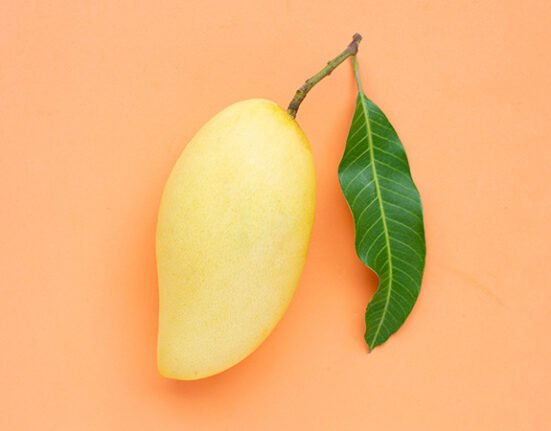Tomatoes are a versatile and nutritious fruit that can be incorporated into a diverse range of culinary dishes. They are an excellent source of essential nutrients, including vitamin C, potassium, and lycopene, which has been scientifically proven to have numerous health benefits, including reducing the risk of certain types of cancer. However, tomatoes have a limited shelf life, making preservation through canning, freezing, or drying an effective way to enjoy their flavor and nutritional benefits throughout the year.
Preserving tomatoes also enables individuals to capitalize on seasonal abundance and reduce expenses by purchasing in bulk when they are at their peak freshness and flavor. Whether tomatoes are grown personally or sourced from a local farmer’s market, preserving them at home is a fulfilling way to extend their shelf life and minimize food waste. Furthermore, by preserving tomatoes at home, individuals have complete control over the ingredients used, allowing them to avoid the added sugars and preservatives commonly found in commercially available canned or dried tomatoes.
Key Takeaways
- Preserving tomatoes through canning, freezing, and drying allows you to enjoy their flavor and nutrition year-round.
- Canning tomatoes involves a step-by-step process that ensures safety and quality.
- Freezing tomatoes requires proper preparation and storage techniques for successful preservation.
- Drying tomatoes preserves their flavor and nutrition while offering versatility in cooking.
- Creative ways to use preserved tomatoes in cooking include making sauces, soups, and adding them to salads and sandwiches.
Canning Tomatoes: A Step-by-Step Guide
Preparing the Tomatoes
To get started, you will need ripe tomatoes, canning jars with lids and bands, a large pot for boiling water, a canning rack, and a jar lifter. To can tomatoes, begin by washing the tomatoes and removing the stems. Then, blanch the tomatoes in boiling water for 30-60 seconds to loosen the skins before transferring them to an ice water bath to stop the cooking process.
Packing and Sealing the Jars
Once cooled, peel the skins off the tomatoes and pack them into the sterilized jars, leaving a half-inch of headspace at the top. Add lemon juice or citric acid to each jar to ensure safe acidity levels before sealing the jars with lids and bands.
Processing and Storing the Jars
Process the jars in a water bath or pressure canner according to the recommended times for your altitude, and allow them to cool before checking the seals and storing them in a cool, dark place.
Freezing Tomatoes: Tips and Tricks for Success
Freezing tomatoes is a quick and easy way to preserve their flavor and texture without the need for special equipment or lengthy processing times. While frozen tomatoes may not be suitable for fresh eating, they are perfect for adding to soups, stews, sauces, and other cooked dishes. To freeze tomatoes, start by washing and drying them before removing the stems and any blemishes.
Then, cut the tomatoes into quarters or leave them whole depending on your preference. Spread the prepared tomatoes in a single layer on a baking sheet and place them in the freezer until they are frozen solid. Once frozen, transfer the tomatoes to airtight containers or freezer bags, removing as much air as possible before sealing.
Label the containers with the date and store them in the freezer for up to 12 months. When you are ready to use the frozen tomatoes, simply thaw them in the refrigerator or at room temperature before adding them to your favorite recipes.
Drying Tomatoes: How to Preserve Flavor and Nutrition
| Preservation Method | Benefits | Considerations |
|---|---|---|
| Canning | Long shelf life, retains flavor | Requires special equipment |
| Freezing | Simple process, preserves nutrients | Requires freezer space |
| Drying | Compact storage, enhances flavor | Takes longer time |
Drying tomatoes is a traditional method of preservation that concentrates their flavor and nutrients while extending their shelf life. Dried tomatoes can be used in a variety of dishes such as salads, pasta, sandwiches, and dips, adding a burst of intense tomato flavor to any meal. To dry tomatoes at home, start by washing and slicing them into uniform pieces about ¼ inch thick.
If desired, you can also remove the seeds and pulp from the tomatoes before drying. Arrange the tomato slices in a single layer on a dehydrator tray or baking sheet lined with parchment paper, making sure to leave space between each piece for air circulation. Set the dehydrator to 135°F or preheat your oven to its lowest setting before placing the tomatoes inside.
Depending on the method used, drying times can vary from 6-12 hours, so it’s important to check the tomatoes periodically until they are leathery but still pliable. Once dried, allow the tomatoes to cool completely before storing them in an airtight container at room temperature for up to 6 months.
Creative Ways to Use Preserved Tomatoes in Cooking
Preserved tomatoes are incredibly versatile and can be used in countless ways to enhance the flavor of your favorite dishes. Canned tomatoes are perfect for making homemade pasta sauce, salsa, or soup, while frozen tomatoes can be added directly to cooked dishes such as chili or curry. Dried tomatoes can be rehydrated in hot water or oil before using them in salads, sandwiches, or pesto, or ground into a powder to add depth of flavor to sauces and seasonings.
In addition to traditional uses, preserved tomatoes can also be used in creative ways such as making tomato jam or chutney, adding depth of flavor to cocktails or mocktails, or even incorporating them into baked goods like savory muffins or bread. By experimenting with different preservation methods and recipes, you can discover new ways to enjoy the taste of summer all year long.
Storing Preserved Tomatoes for Long-Term Enjoyment
Storing Canned Tomatoes
Canned tomatoes should be stored in a cool, dark place, such as a pantry or basement, where temperatures remain consistent and do not exceed 85°F. It’s essential to periodically check the seals on canned jars and discard any that show signs of spoilage, such as bulging lids or leaking liquid.
Storing Frozen Tomatoes
Frozen tomatoes should be stored in a freezer at 0°F or below to maintain their quality for up to 12 months. It’s best to use airtight containers or freezer bags to prevent freezer burn and label them with the date to ensure that you use the oldest tomatoes first.
Storing Dried Tomatoes
Dried tomatoes should be stored in an airtight container at room temperature, away from direct sunlight and moisture. Before using dried tomatoes in recipes, it’s important to check for any signs of mold or off odors.
Safety Tips for Preserving Tomatoes at Home
When preserving tomatoes at home, it’s important to follow safe food handling practices to prevent the risk of foodborne illness. Always start with fresh, ripe tomatoes that are free from any signs of spoilage such as mold or soft spots. Wash your hands and all equipment thoroughly before beginning the preservation process, and use clean, sterilized jars and lids for canning.
When canning tomatoes, it’s essential to follow tested recipes and processing times to ensure that the acidity levels are safe for water bath canning or pressure canning according to your altitude. It’s also important to use up-to-date canning methods and equipment to prevent the risk of botulism poisoning. When freezing or drying tomatoes, it’s important to work quickly to minimize exposure to bacteria and store them properly to maintain their quality.
In conclusion, mastering the art of preserving tomatoes through canning, freezing, and drying is a rewarding way to enjoy their flavor and nutritional benefits all year round. By following safe food handling practices and experimenting with different preservation methods and recipes, you can discover creative ways to use preserved tomatoes in cooking while ensuring their long-term enjoyment. Whether you’re a seasoned home preserver or new to the process, there’s no better time than now to start preserving your own delicious tomatoes at home.
FAQs
What are the benefits of preserving tomatoes through canning, freezing, and drying?
Preserving tomatoes allows you to enjoy their flavor and nutrients year-round, reduces food waste, and saves money by taking advantage of seasonal abundance.
What is the process of canning tomatoes?
Canning tomatoes involves sterilizing jars, preparing the tomatoes, adding acid (usually lemon juice or citric acid) to ensure safe acidity levels, and processing the jars in a boiling water bath or pressure canner.
How do you freeze tomatoes for preservation?
To freeze tomatoes, you can blanch and peel them before placing them in airtight containers or freezer bags. Alternatively, you can freeze them whole and unpeeled for later use in sauces or soups.
What is the process of drying tomatoes?
Drying tomatoes can be done in a dehydrator or oven at a low temperature. Sliced tomatoes are arranged in a single layer and dried until they are leathery and free of moisture.
What are the best ways to use preserved tomatoes?
Preserved tomatoes can be used in sauces, soups, stews, and casseroles, as well as in salads, sandwiches, and as a topping for pizzas and pastas.





